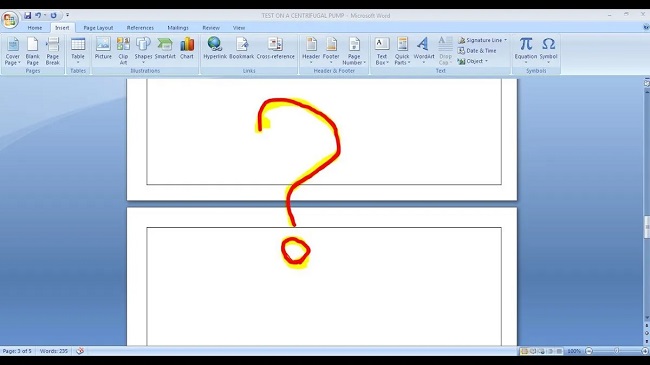Installing or operating Windows 10 presently giving you the “kernel security check failure windows 10” error? In this piece, I’ll explain what this stop code means and how to easily get rid of it.
The “Kernel Security Check Failure” error can be brought on by corrupted system files, broken hardware, or out-of-date drivers, among other things.
Type “sfc/scannow” into the command prompt and press Enter to run the system file checker program to see if the kernel security check failure was caused by a damaged or corrupted file system. In the event of any problems, this utility will be executed, and corrupted cached files will be replaced when the system reboots.

What is the Blue Screen of Death?
The “Kernel Security Check Failure” error usually becomes apparent as Windows is starting up. Here’s where Windows runs its quality assurance checks. A Kernel Security check failure exception is triggered if Windows discovers corruption in any essential data structures during this procedure.
The mistake is only briefly described in the following screenshot. The message includes a stop code (highlighted in yellow) that can be used to determine the root cause of the Blue Screen of Death. This Guide Will Teach You How to Correct the Error Message Kernel Security Check Failed Windows 10.
Read Also:
- Minecraft Opengl Error 1281
- Webkit Encountered An Internal Error
- The Remote Connection Was Not Made Because The Name Of The Remote Access Server Did Not Resolve
How to Fix the Kernel Security Check Failure Windows 10 Error
The problem can be fixed by conducting an inquiry to determine what caused it. Once you figure out what’s causing the problem, you may implement the appropriate solution. As the report suggests, switching to the most recent version of Windows 10 could be a quick and easy solution.
Method 1. Update Windows 10 to The Latest Release
To begin, we suggest installing the most recent version of Windows 10 and seeing if the BSOD error persists after the update. Bugs can be squashed, new features added, and security vulnerabilities closed with the help of updates. The Windows 10 upgrade procedure is as follows:
Step 1: Start by clicking the Windows icon in the bottom left of your screen. Select Preferences, or hit the Windows key + I.
Step 2: Access the Update & Security menu by selecting the tile. Most Windows Update controls, including when updates are downloaded and installed, may be found in this section.
Step 3: Maintain the current tab, “Windows Update.” To have Windows 10 look for updates automatically, select the Check for updates menu.
Step 4: In the event that updates are already displayed, you can view and install them by selecting the View all optional updates link.
Step 5: If an update is available, selecting it and clicking “Install” will trigger Windows 10 to download and install it.
Step 6: Be sure to double-check whether the Kernel Security Check failure issue reappears after updating to the most recent system version.
Method 2. Update Your Drivers
The Kernel Security Check failure error may appear on your device if the drivers are out of date. This article explains how to update drivers, which may resolve certain problems.
For this particular blue screen of death, updating the drivers is merely a stopgap measure. If you’ve tried this and it hasn’t helped, try something else!
Step 1: To open Device Manager, hit the Windows key + X.
Step 2: Please expand each and every section to check for out-of-date drivers. When a motorist is having trouble, a yellow exclamation mark will appear on their profile.
Step 3: Choose Properties from the right-click menu after identifying outdated drivers.
Step 4: Click the Update Driver button in the Driver tab.
Step 5: Pick the means via which you wish to upgrade your driver. In Windows 10, you have the option of either letting the operating system find a suitable driver on its own or manually navigating to a suitable driver file on your hard drive.
Step 6: Do not interrupt the driver installation process at this time. If there are any more drivers causing an error or showing their age, update them.
Step 7: Please restart your computer for the newly installed driver to take effect (s). The next step is to verify whether or not the Blue Screen of Death is still occurring.
Method 3. Check for Memory Issues
A built-in Windows 10 scanner will detect memory (RAM) problems in the same way it will detect drive problems. Follow these directions to use Windows’ memory diagnostics tool and perhaps put an end to that blue screen of death.
Step 1: Select the magnifying glass icon in the taskbar to activate the search function. The Windows + S keyboard shortcut will also bring it up.
Step 2: Enter “Memory Diagnostic” into the search bar and select the top result.
Step 3: You’ll see a new window come out of nowhere. Don’t forget to back up your data beforehand! To begin the memory tests, select the highly suggested Restart now and check for errors option.
Step 4: After a restart, your computer will use a memory diagnostics program to see if there are any problems with the RAM installed. Immediately upon discovering a problem, you will be informed of its existence.
Read Also:
Conclusion
Security Analysis of the Kernel Despite its name, the kernel security check failure windows 10 error message in Windows 10 is not a virus but rather a warning that the system has encountered a problem reading specific files.
Malware and virus infestations, incompatible settings, memory issues, erroneous Registry modifications, and other factors could all be at the core of data corruption.


